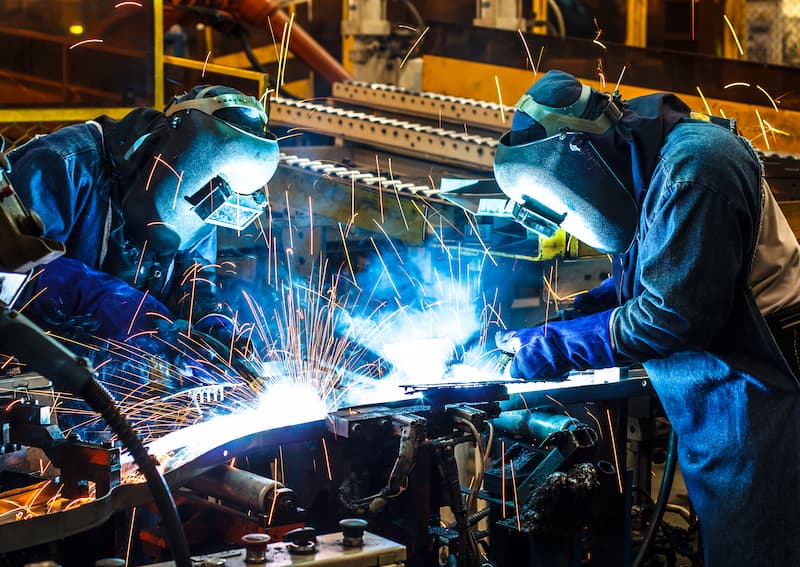Welding WPS: Typical Blunders to Prevent and Just How to Correct Them
Welding WPS: Typical Blunders to Prevent and Just How to Correct Them
Blog Article
The Ultimate Guide to Welding WPS Procedures: A Thorough Review for Welders
In the elaborate world of welding, Welding Procedure Specs (WPS) work as the backbone of guaranteeing top quality, consistency, and safety and security in welding procedures. Comprehending the subtleties of developing, implementing, and keeping track of WPS procedures is essential for welders seeking to elevate their craft and fulfill sector criteria. As we look into the various elements of a WPS and explore the intricacies of certification and accreditation, we will certainly uncover the important role these procedures play in the world of welding. Allow's start a journey to unravel the complexities and relevance of WPS procedures in welding practices.
Value of WPS Procedures
Understanding the relevance of Welding Procedure Requirements (WPS) treatments is essential for ensuring the quality and honesty of bonded structures. WPS treatments act as a roadmap for welders, detailing the necessary steps, parameters, and products required to accomplish a sound weld. By adhering to WPS standards, welders can ensure consistency in their job, resulting in trusted and structurally audio welds.
One of the key factors why WPS treatments are necessary is their duty in preserving weld quality and stability. Adhering to the defined welding parameters and techniques outlined in the WPS helps prevent issues such as porosity, cracking, or incomplete fusion, which can endanger the toughness and resilience of the weld.
Elements of a WPS
A Welding Treatment Specification (WPS) usually makes up important elements that detail the specific requirements for carrying out a weld, ensuring consistency and quality in the welding process. The essential parts of a WPS include important variables such as base steels, filler steels, preheat and interpass temperatures, welding processes, protecting gases, welding settings, and post-weld warmth treatment needs.
Base metals refer to the products being signed up with, while filler metals are utilized to fill the space in between the base steels throughout welding. The welding procedure describes the particular strategy to be utilized, whether it's gas steel arc welding (GMAW), shielded steel arc welding (SMAW), or another technique. Welding settings specify the alignments in which welding can be executed.

Qualification and Certification
Having established the crucial components of a Welding Treatment Requirements (WPS), the emphasis currently shifts towards the critical aspects of qualification and accreditation in welding techniques.

Qualification, on the various other hand, is the official acknowledgment of a welder's certifications by a pertinent qualification body or company. Welding certifications are normally based upon the specific welding procedures, materials, and positions a welder is certified to collaborate with. Holding a legitimate welding qualification shows that a welder satisfies industry standards and is experienced look at here to do welding tasks to the required specifications.
Creating a WPS
To establish a Welding Treatment Requirements (WPS) that fulfills market standards, cautious factor to consider of welding processes, products, and operational criteria is important (welding WPS). The first action in creating a WPS is to identify the welding process to be made use of, such as gas metal arc welding (GMAW) or secured metal arc welding (SMAW) Once the welding procedure is figured out, the following vital facet is selecting the appropriate materials, thinking about variables like base metal type, density, and joint layout. Functional criteria such as welding current, voltage, travel rate, and protecting gas structure should likewise be meticulously defined in the WPS.

Carrying Out and Monitoring WPS
Upon settling the extensive Welding Treatment Specification (WPS) that meticulously details welding procedures, products, operational criteria, and high quality guarantee actions, the focus shifts to efficiently executing and monitoring the well-known treatments. Application entails making sure that all welders associated with the project are acquainted with the WPS and follow it meticulously throughout the welding process. This requires providing ample training and supervision to guarantee adherence to the defined treatments. Monitoring the WPS involves continual oversight to verify that welding activities align with the documented requirements. Evaluations, testing, and quality assurance actions are important parts of the surveillance procedure to identify any concerns or deviations promptly. Normal audits and evaluations of the welding treatments aid in preserving uniformity and top quality throughout the task. Effective application and surveillance of the WPS are essential for ensuring the honesty, toughness, and security of the bonded joints, ultimately contributing to the total success of the welding project.
Final Thought
Finally, understanding and adhering to Welding Procedure Specifications (WPS) is critical for welders to make certain quality, consistency, and safety and security in their job. By recognizing the components of a WPS, acquiring proper certifications and certifications, producing description detailed treatments, and implementing and checking them successfully, welders can improve their abilities and effectiveness in welding practices. Adhering to WPS treatments is important for creating high-grade welds and meeting industry requirements.
In the elaborate world of welding, Welding Treatment Specifications (WPS) serve as the foundation of ensuring quality, consistency, and safety in welding pop over to this site operations. The welding process describes the specific technique to be used, whether it's gas metal arc welding (GMAW), secured steel arc welding (SMAW), or an additional technique.To develop a Welding Treatment Requirements (WPS) that fulfills market standards, careful consideration of welding procedures, products, and functional parameters is vital. The very first step in creating a WPS is to recognize the welding procedure to be utilized, such as gas metal arc welding (GMAW) or secured steel arc welding (SMAW)Upon finalizing the thorough Welding Procedure Spec (WPS) that diligently information welding processes, materials, functional specifications, and high quality assurance measures, the focus moves to properly carrying out and monitoring the recognized treatments.
Report this page